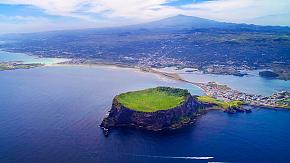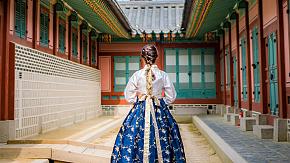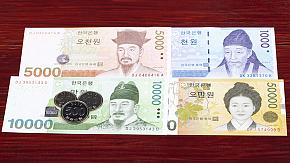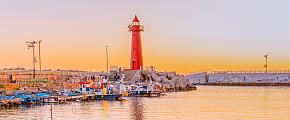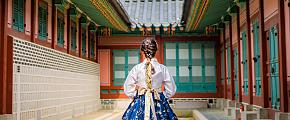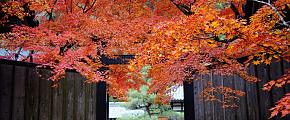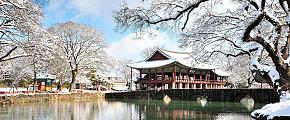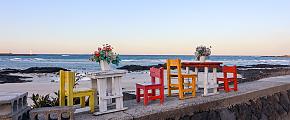Guide to Jeju Island: How to Get There & Best Time to Visit
Known as the Hawaii of Korea, Jeju Island offers a diverse range of experiences throughout the year. Whether you're seeking adventurous hikes or relaxing beach days, this island paradise has something for you. In this guide, we'll provide you with detailed information on the best times to visit, interesting things to do, and practical tips to help you plan the perfect Jeju Island trip in South Korea.
The Beauty of Jeju Island
Jeju Island, the country's largest, nestled in the southwestern sea, is one of the must-visit places of South Korea for first-timers. It is a volcanic land home to Hallasan, the country's tallest mountain at 1,951 meters, formed through volcanic eruptions. With its maritime climate, Jeju offers stunning scenery year-round. In spring, the island is adorned with vibrant flowers; summer invites you to its beautiful beaches; and autumn and winter reveal a serene charm, making it an ideal destination for you.
Best Time to Visit Jeju Island
The best time to visit Jeju Island is during the spring (March to May) and autumn (September to November). Spring offers blooming flowers and pleasant weather, while autumn brings clear blue skies and mild temperatures. Next, you will see the charm of Jeju Island throughout the year, helping you to determine the perfect time in your mind to visit Jeju Island.
Spring
Spring (March to May) in Jeju Island offers a pleasant climate with average temperatures between 5℃ and 11℃ (41℉ and 52℉). During this season, the area around Seongsan Ilchulbong is adorned with cherry blossoms and canola flowers, creating a romantic sea of blooms. The contrasting colors of pink and yellow under the warm sun paint a dreamy spring landscape that is truly unforgettable.
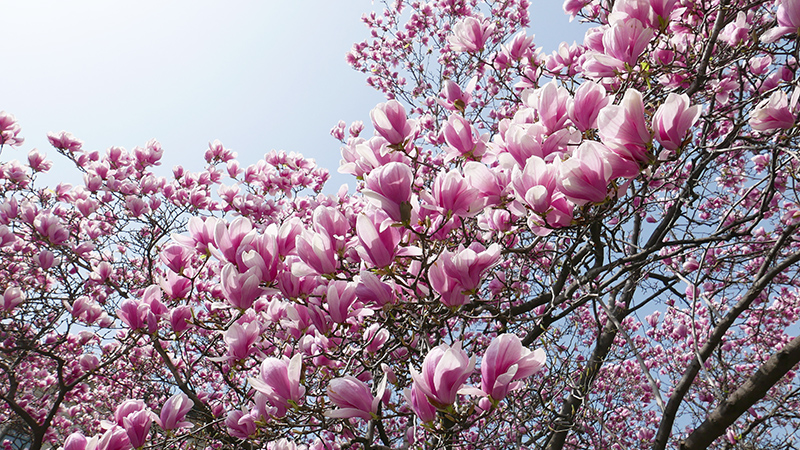 Flowers in Seongsan Ilchulbong, Jeju Island
Flowers in Seongsan Ilchulbong, Jeju Island
Summer
Summer (June to August) in Jeju Island is full of energy, with average temperatures ranging from 22℃ to 27℃ (72℉ to 81℉). Explore the island's beautiful beaches, such as Gwakji Beach, where you can swim, sunbathe, or try your hand at gathering seafood. The cool sea breeze, crystal-clear waters, and soft sands offer a relaxing summer getaway.
Autumn
Jeju Island's autumn (September to November) boasts comfortable temperatures between 16℃ and 21℃ (61℉ and 70℉), making it a perfect time for hiking and orange picking. Hike along the trails of Hallasan Mountain and enjoy the fresh air. You can also experience the joy of picking juicy oranges during the harvest season, adding a sweet touch to your autumn journey.
Winter
Jeju Island offers unique beauty in winter, with average temperatures ranging from 5℃ to 10℃ (41℉ to 50℉). This is the perfect time to admire the island's camellia flowers. The vibrant red blossoms stand out against the winter landscape, adding a splash of color to the chilly season. In addition, driving or hiking along the 1100 Road allows you to appreciate the stunning winter scenery of the mountains and forests.
What to Do in Jeju Island
Discover Hallasan National Park
Hallasan National Park, located at the heart of Jeju Island, is home to Mount Hallasan, a magnificent shield volcano and the highest peak in South Korea. The park offers diverse ecosystems and stunning landscapes, making it a perfect natural attraction for hiking and nature exploration.
The best routes to climb Mount Hallasan are the Seongbanak Trail and the Gwaneumsa Trail. Hiking up Seongpanak and down Gwaneumsa allows you to enjoy breathtaking views of vast forests and seasonal flowers, offering a serene and immersive hiking experience.
Watch the Sunrise at Seongsan Ilchulbong
Seongsan Ilchulbong, also called Sunrise Peak, you know what to do here as soon as you hear the name - watch the sunrise! It is a prominent landmark of Jeju Island and was formed by an underwater eruption. Climbing to the top early in the morning rewards you with a breathtaking view of the sun slowly rising above the horizon, casting its golden rays across the vast ocean. It's advisable to arrive before sunrise to secure the best viewing spot.
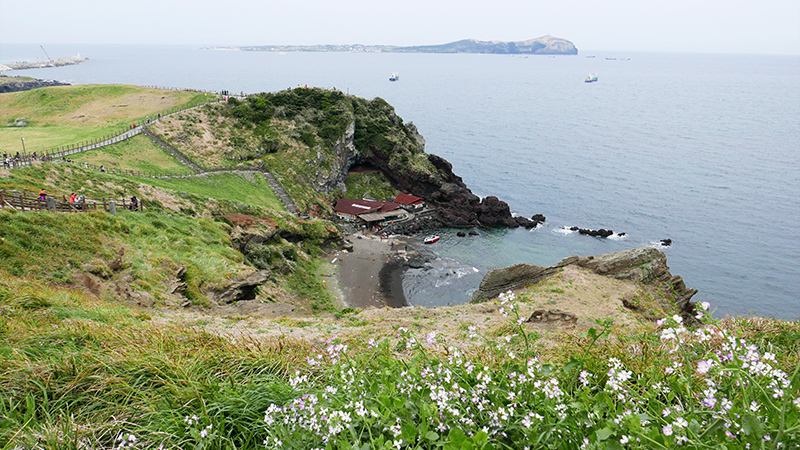 Seongsan Ilchulbong
Seongsan Ilchulbong
Explore Manjanggul Lava Tube
Manjanggul Lava Tube, with a total length of 7.4 kilometers, is one of the world's longest lava tunnels. Located on Jeju Island, this underground wonder is renowned for its stunning formations, including stalactites, stalagmites, and lava tubes. While the cave has three entrances, only the second entrance is accessible to you, and currently, only about 1 kilometer of the cave is open for exploration.
Please note that the cave is undergoing facility maintenance and is scheduled to reopen in August 2025. It is recommended to check the latest opening information before your visit.
Visit Jeju National Museum
Opened in 2001, the Jeju National Museum is dedicated to preserving and exhibiting the rich history and culture of Jeju Island. Its collection spans from the prehistoric age to the Joseon dynasty, offering you a glimpse into the island's past. In addition to its collection of archaeological relics, the museum also hosts special exhibitions every year that highlight Jeju's traditional culture. It's a must-visit for anyone interested in exploring the island's history.
Taste Local Food
When traveling to Jeju Island, trying the local food in Korea is an absolute must. And what trip to Jeju Island would be complete without indulging in some juicy black pork BBQ? Paired with meljeot (a salted and fermented anchovy sauce), this local delicacy is a true treat.
Of course, no visit to Jeju Island is complete without tasting the fresh seafood, especially the sashimi. Its delicate texture and fresh flavor are sure to meet your taste buds. Unlike Japanese sashimi, Korean sashimi emphasizes freshness, often served with Korean chili paste or lettuce. Japanese sashimi, on the other hand, prioritizes intricate knife work and the flavors of soy sauce and wasabi. If you've tried Japanese sashimi, you'll be able to appreciate the subtle differences in Korean sashimi.
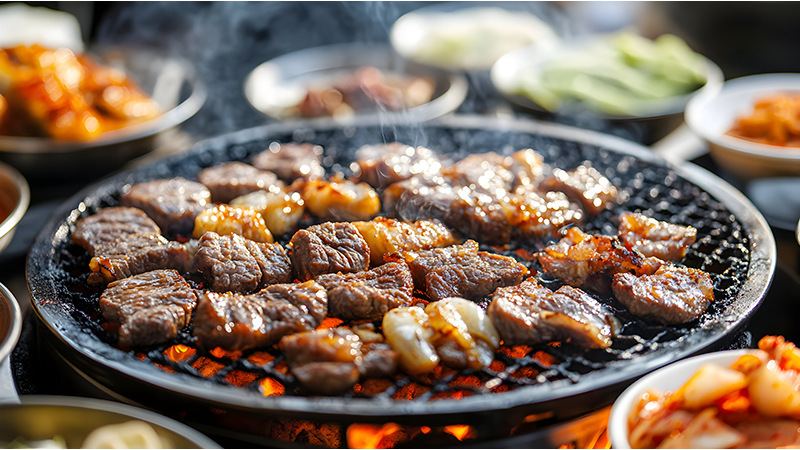 Black Pork BBQ
Black Pork BBQ
Explore Jeju's Surrounding Islands
If you're looking for more than just Jeju Island, why not explore its surrounding islands?
Udo Island, meaning "Cow Island," is the second largest island around Jeju and is said to look like a cow when viewed from a certain angle. This island is famous for its eight must-see sights, collectively known as the Eight Sights of Udo, including Juganmyeongwol, Yahangabyum, Chunjinguansan, Jiduchungsa, Jeonphomangdo, Huhaesukbyeok, Dongankyeonggul, and Seobinbaeksa.
Marado Island is a natural reserve and a sanctuary for rare bird species. If you're a birdwatcher, spring and autumn are the best times to visit. Gapado Island, though less famous than the other two islands, offers a peaceful retreat away from the hustle and bustle.
How to Get to Jeju Island & Get Around
Getting to Jeju Island is very convenient, and the preferred transportation is by plane. You can take a flight from major airports such as Gimpo International Airport in Seoul and Gimhae International Airport in Busan, and it only takes about an hour to reach Jeju International Airport. International flights are equally convenient, with direct flights available from Singapore, Japan, and other destinations to Jeju.
Alternatively, you can consider taking a ferry. Ferries can accommodate cars and motorcycles, making it convenient for you to explore the island at your own pace. Enjoy the coastal views as you sail towards Jeju Island. However, ferry journeys take longer; the fastest route is approximately two hours and forty minutes.
Once on the island, getting around is easy. You can rent a car, take a bus, hail a taxi, or bring your own vehicle if you've opted for the ferry.
Additionally, you can easily visit the nearby islands of Udo Island, Marado Island, and Gapado Island. Ferries to Udo Island depart from Seongsan Port or Jongdal Port, taking around 15 minutes. To reach Marado Island, you'll need to take a ferry from Unjinhang, which takes about 25 minutes. For Gapado Island, ferries depart from Moseulpo Harbor, taking approximately 15 minutes.
Where to Stay in Jeju Island
Jeju City and Seogwipo are two highly recommended places to stay on Jeju Island. Located in the northern part of the island and close to Jeju International Airport, Jeju City is a transportation hub and the largest city on Jeju Island, making it convenient for exploring nearby attractions. Seogwipo, situated in the southern part, is known for its friendly atmosphere and vibrant energy, making it an ideal spot to enjoy coastal scenery. Both cities offer excellent transportation options and facilities to suit your diverse needs.
Plan Your Jeju Island Trip With Odynovo
Embark on an extraordinary Jeju Island adventure with Odynovo! We create personalized itineraries tailored to your interests and preferences. Every detail is carefully planned, ensuring a smooth and enjoyable experience. Choose Odynovo for a truly unique and unforgettable journey.
Quick Question
Related Posts You May Like
What Our Clients Say
Explore the latest verified reviews of Odynovo's travel services on Tripadvisor, Google, Trustpilot, Product Review and more trusted platforms.

